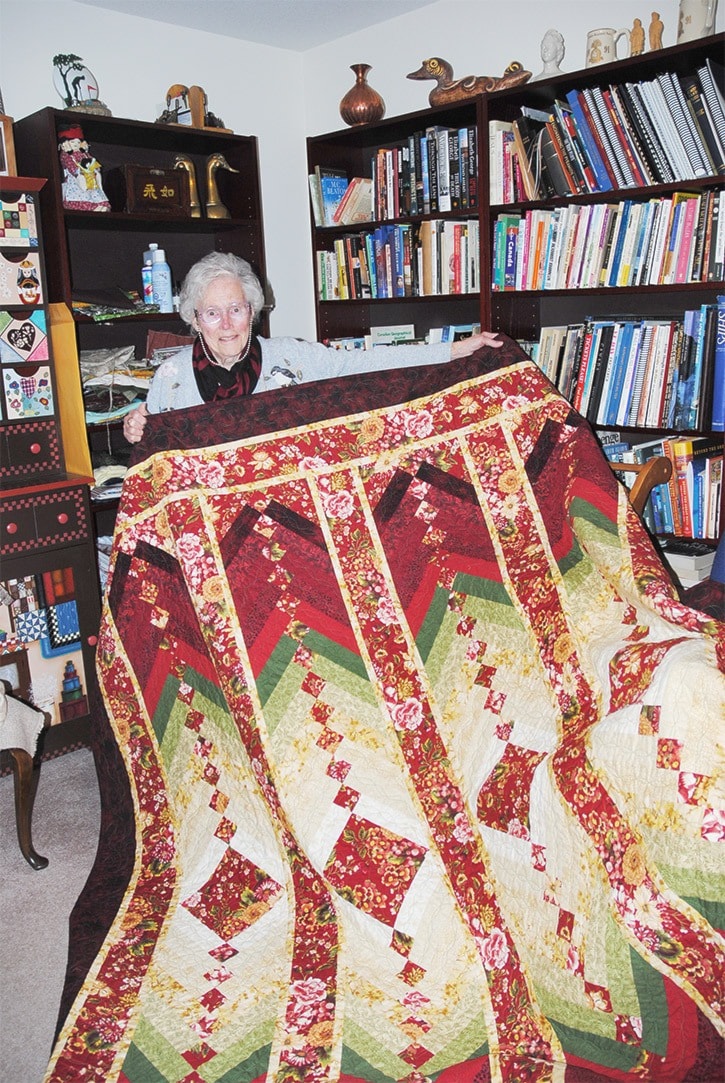Many military people serving in the Second World War never saw any fighting.
But behind the front lines there were thousands of people supporting the war effort in many different ways.
Marion Corless served as an occupational therapist in the Canadian Army in Canada and England.
She graduated from the University of Toronto in 1943, where training included summer internships at a psychiatric hospital in Kingston, the Sick Children’s Hospital in Toronto and with Worker’s Compensation in Toronto.
“It was really hard to find a position after you graduated so I continued on at Workman’s compensation in a non-paid role,” Corless says.
One day she saw an Army recruiting sign and decided to join up.
“My parents asked ‘what did you do today dear,’ and I said I went and joined the Army. They were a bit shocked.”
Medical staff were recruited as officers and had to buy their own uniforms. Her uniforms included a blue surge suit for travel; a blue two-piece work uniform with belt and white veil, and a silk dress uniform.
She and her mother made her head veils.
“The Army always sent you as far away as possible so they sent me to Nanaimo for basic training,” Corless said. After six weeks of basic training she was sent to the Harrison Hot Springs Hotel that was in use as a rehabilitation hospital.
“I was there until three weeks after D-Day, June 6, 1944,” Corless said. “Then they gave us three weeks leave.”
While on leave in Toronto Corless was assigned to the General Hospital 24 Canadian Army Overseas unit.
This was a complete mobile hospital unit with dozens of doctors, nurses, occupational and physiotherapists, cooks, and other hospital staff.
The unit boarded the train for Debert, Nova Scotia where they practiced on parade, had more immunization shots and waited for their boat to Europe. Anyone heading overseas left from and returned to Halifax at Pier 21, Coreless said.
“There is quite a museum there now where people can look up anyone who travelled from that port.”
Her hospital unit travelled to England on the Nieuw Amsterdam, a Dutch cruise ship recruited into military service. She says many ships carrying military people were escorted by war ships but they were unescorted.
The crossing took six days of zig/zagging across the Atlantic. They changed course every three to four minutes to avoid possible submarine fire. Three minutes was about the time it would take for a torpedo to reach a target once it had been fired.
On the ship 12 recruits slept on bunk-beds crowded into a stateroom built for two. She said they had to do a lot of organizing to figure out who went where when.
There were so many recruits that there had to be three sittings for every meal. Fortunately she says she and a few female friends met some handsome men who liked to play bridge. They were on separate meal schedules so one group would save the table for the other and they would play bridge in-between.
“That was really fun,” Corless said.
She wished she had kept a diary but that was forbidden because of the risk of secret information getting into enemy hands if they were captured.
The ship landed in Greenrock, Scotland where they boarded a train for the Scotch Corner Hotel in Yorkshire, England.
Only tables and chairs were left in the hotel so everyone slept in their sleeping bags on the floor, comforted by a blow-up pillow.
The first night a mouse ate the half eaten chocolate bar she left beside her. “I didn’t do that again. Chocolate bars were too precious.”
They slept on the floor at the hotel for three weeks waiting for their transfer to the military hospital in Smallfield, Surrey to replace the hospital unit that was being moved to France.
In making the transfer to Smallfield, Corless said they ended up living on a train for three weeks because the tracks had been removed to replace tracks in London that had been destroyed in a bombing raid. “Luckily I had a table with three other nurses so we could sleep sitting up with our heads on our blow-up pillows,” Corless says.
When they got to Victoria Station, she says glass was falling all around them from a nearby bombing raid.
After more train rides they were taken the final few miles to the hospital in Army trucks.
